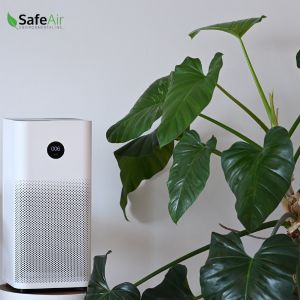3 Ways the Winter Can Compromise Your Home Air Quality
Posted in Air Quality, on November 11, 2024
As soon as a chill enters the air, your home’s air quality changes in subtle ways that can affect your daily comfort and health. The best way to understand these changes is through air quality testing in Toronto with SafeAir. Our safe and reliable air quality assessments can help you monitor and track changes to your home’s environment and help you put into place solutions to maintain a healthier and more comfortable home environment. The results from home air quality testing often reveal how small actions can have a significant impact on your comfort, health, and general well-being. In today’s article, we’ll share three common ways in which winter compromises your home air quality and how you can fight back.
Increased Indoor Pollutants Due to Limited Ventilation
 As the seasons shift, so too does our home’s ventilation. In the summer months, fresh air is plentiful from open windows, doors, and traffic in and out of the house. But as it gets cooler, the windows close, and the focus shifts to keeping heat in, not out. This reduction in natural ventilation can result in increased pet dander, dust, VOCs and other indoor pollutants in your air quality, leading to respiratory issues and increased allergic reactions. While these effects may seem minor, over time, they seriously disrupt your daily life and irritate or even cause chronic conditions.
As the seasons shift, so too does our home’s ventilation. In the summer months, fresh air is plentiful from open windows, doors, and traffic in and out of the house. But as it gets cooler, the windows close, and the focus shifts to keeping heat in, not out. This reduction in natural ventilation can result in increased pet dander, dust, VOCs and other indoor pollutants in your air quality, leading to respiratory issues and increased allergic reactions. While these effects may seem minor, over time, they seriously disrupt your daily life and irritate or even cause chronic conditions.
Some common effects of decreased ventilation include:
- Coughing
- Sneezing or nasal congestion
- Itchy, watery eyes
- Headaches
- Increased likelihood of mold infestations
Dry Indoor Air And Respiratory Irritation
As the mercury drops outside, furnaces and indoor heating systems are turned on inside, resulting in warm, dry air. Airborne moisture, also known as humidity, feels sticky and uncomfortable in July when it’s 30℃. However, during the winter, this lack of humidity is equally uncomfortable as your skin, hair, and mucous membranes dry out. This dryness actually increases our susceptibility to viruses and bacteria; the nose, for example, needs mucous to trap viruses, which is why we experience a surge in sinus infections, colds, and flu during the winter. Bacteria and viruses also linger in dry air longer than they do when humidity is higher.
At SafeAir, we suggest using a humidifier to raise moisture levels in the air. Many HVAC units have add-on humidifiers that do this seamlessly, but we also like small bedside units, which have the added benefit of improving sleep and ensuring moisture doesn't get trapped where it can cause mold.
Increased Uses of Combustion-Based Heating
While the crackle of a roaring fire sets a relaxing and seasonal mood, it may also be contributing to poor indoor air quality. Fireplaces, wood stoves, and gas heating can all release particulates and pollutants like carbon monoxide, especially if they are older or have not been maintained. Particulates are experiencing increased attention from scientists and healthcare providers because of new research linking them to increased infant mortality, cardiovascular disease, diabetes, asthma, and cancer.
Even soot-less appliances have risks, too. Gases like carbon monoxide have no scent, taste or visual effects, making it impossible to sense there’s a problem without specialized equipment. Carbon monoxide poisoning begins as drowsiness and headaches but can quickly progress to life-threatening effects. Home air quality testing will detect these by-products and help you make an informed decision about maintenance and use to reduce and eliminate your risk.
The Benefits of Winter Air Quality Testing
At SafeAir, we take the safety and quality of your indoor environment seriously, having seen the benefits our clients experience from even minor changes to their environment. A balanced air environment during the winter helps you with the following:
- Faster recovery from common winter illnesses like the cold or flu.
- Better sleep and rest.
- Increased personal comfort — less dry skin, eyes, or hair.
- A reduction in long-term exposure to harmful chemicals or particles.
- Fewer strange smells or pockets of dead air.
Improve Air Quality This Winter with SafeAir
Improving air quality at home can often be very straightforward and easy. Some of our most common suggestions include increasing the frequency when you change your furnace filter or switching to scentless products. Knowing where to make adjustments to your routine helps target specific issues that you and your family face and can help you achieve your health and wellness goals. Protect your indoor air quality this winter with air quality testing in Toronto - contact SafeAir to book a visit today.

